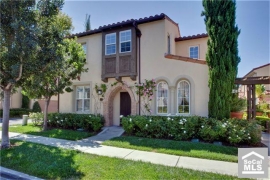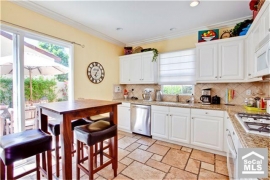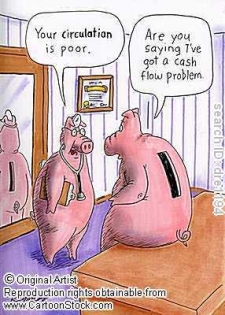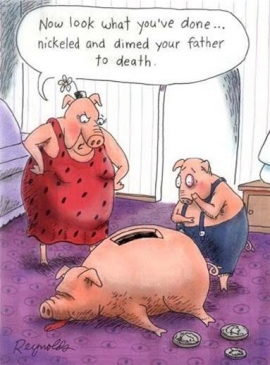In an effort to stop the double dip from getting worse, lenders are slowing foreclosure activity nationwide. Their efforts will delay the market bottom and extend squatting benefits.
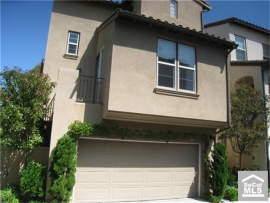
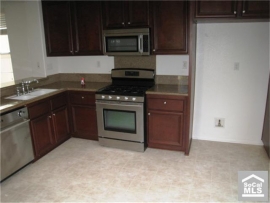
Irvine Home Address … 219 TALL OAK Irvine, CA 92603
Resale Home Price …… $550,525

Now if you're feelin' kinda low 'bout the dues you've been paying
Future's coming much too slow
And you wanna run but somehow you just keep on stayin'
Can't decide on which way to go
I understand about indecision
But I don't care if I get behind
People livin' in competition
All I want is to have my peace of mind.
Boston — Peace of Mind
 Do you ever find yourself getting impatient with the way lenders have dragged out the housing crash? I do. It isn't merely that I want to see lower house prices as those are prevalent across most of the country. I want to see the economic wounds heal. That isn't going to happen until lenders foreclose on all the delinquent mortgage squatters and resell the resulting REO.
Do you ever find yourself getting impatient with the way lenders have dragged out the housing crash? I do. It isn't merely that I want to see lower house prices as those are prevalent across most of the country. I want to see the economic wounds heal. That isn't going to happen until lenders foreclose on all the delinquent mortgage squatters and resell the resulting REO.
While we wait for lenders to do what needs to be done, the homebuilding industry remains in the doldrums, lending remains at anemic levels, and overall economic activity is feeble. None of that will change until our zombie banks are put out of their misery and recapitalized. In the meantime, lenders are slowing foreclosures and dragging out the economic morass. Academics in the United States used to criticize Japan for the way they dealt with this same problem in the 1990s. We are going down the same path.
U.S. Foreclosure Activity Falls to 44-Month Lows in July; Artificially Slowed by Banks
Posted by Michael Gerrity 08/11/11 8:00 AM EST
According to RealtyTrac's U.S. Foreclosure Market Report for July 2011, foreclosure filings — default notices, scheduled auctions and bank repossessions — were reported on 212,764 U.S. properties in July, a 4 percent decrease from June and a 35 percent decrease from July 2010. The report also shows one in every 611 U.S. housing units with a foreclosure filing during the month of July.
Foreclosures are essential to the economic recovery. There is little debate that the housing market will not clear and house prices will not enjoy sustained appreciation until the foreclosure backlog is cleared out. As long as shadow inventory or REO inventory is present, lenders will sell into any rally thus stopping it cold.
The fact that lenders are slowing the rate of foreclosure simply means the bottom is being pushed back further in time. Also, since the delinquency rate is still very high, a slowdown in foreclosure rates means more and more people are squatting for longer periods of time.
“July foreclosure activity dropped 35 percent from a year ago, marking the 10th straight month of year-over-year decreases in foreclosure activity and the lowest monthly total since November 2007,” said James J. Saccacio, chief executive officer of RealtyTrac.
“This string of decreases was initially triggered by the robo-signing controversy back in October 2010, which forced lenders to substantially slow the pace of foreclosing, but the downward trend in foreclosure activity has now taken on a life of its own.
 This should be no surprise to IHB readers. I have long contended that robo-signer was merely a ruse, the excuse-of-the-day, to delay foreclosures and avoid writing down more bad loans. Lenders will continue this behavior as long as they believe there is no buyer demand to sell into. Eventually, lenders will realize the buyer demand they are waiting for will never materialize. When they do, they will capitulate and sell for whatever they can get.
This should be no surprise to IHB readers. I have long contended that robo-signer was merely a ruse, the excuse-of-the-day, to delay foreclosures and avoid writing down more bad loans. Lenders will continue this behavior as long as they believe there is no buyer demand to sell into. Eventually, lenders will realize the buyer demand they are waiting for will never materialize. When they do, they will capitulate and sell for whatever they can get.
It appears that the foreclosure processing delays, combined with the smorgasbord of national and state-level foreclosure prevention efforts — including loan modifications, lender-borrower mediations and mortgage payment assistance for the unemployed —may be allowing more distressed homeowners to stave off foreclosure.
No, it is allowing more delinquent mortgage squatters to stay in homes that should be resold to those who are willing and able to pay for them.
“Unfortunately, the falloff in foreclosures is not based on a robust recovery in the housing market but on short-term interventions and delays that will extend the current housing market woes into 2012 and beyond,” Saccacio continued.
Yes, the slowdown in foreclosure activity will delay the bottom and allow more squatting.
“A stabilizing economy and improving job market are the long-term keys to a housing market recovery.”
Persistent unemployment is an ongoing drain to the economy and to the housing market.
Foreclosure Activity by Type
Default notices (NOD, LIS) were filed for the first time on a total of 59,516 U.S. properties in July, a 7 percent decrease from the previous month and a 39 percent decrease from July 2010. July's default notice total was 58 percent below the monthly peak of 142,064 default notices in April 2009.
Foreclosure auctions (NTS, NFS) were scheduled for 85,419 U.S. properties in July, a decrease of 5 percent from June and a decrease of 37 percent from July 2010. July's foreclosure auction total hit a 36-month low and was 46 percent below the monthly peak of 158,105 scheduled auctions in March 2010.
Lenders repossessed a total of 67,829 properties (REO) in July, a 1 percent decrease from the previous month and a 27 percent decrease from July 2010. The July REO total was 34 percent below the monthly peak of 102,134 bank repossessions in September 2010.
As i noted in a previous post, the dramatic declines are almost exclusively in judicial foreclosure states.

Nevada, California, Arizona post top state foreclosure rates
Nevada posted the nation's highest state foreclosure rate for the 55th straight month in July, with one in every 115 housing units receiving a foreclosure filing during the month. A total of 9,930 Nevada properties had a foreclosure filing in July, a 1 percent decrease from the previous month and a 28 percent decrease from July 2010.
Nevada also boasts one of the largest action postponement and cancelation percentages of any state. Locally, about 87% of auctions are delayed or canceled, but in Nevada the number is closer to 95%. It's a classic example of kicking the can down the road.
Despite a 16 percent year-over-year decrease in foreclosure activity, California registered the nation's second highest state foreclosure rate in July, with one in every 239 housing units with a foreclosure filing during the month.
With one in every 273 housing units with a foreclosure filing, Arizona posted the nation's third highest state foreclosure rate, after holding the No. 2 spot for seven straight months ending in June. A 39 percent month-over-month drop in REO activity pulled Arizona's total foreclosure activity in July down 25 percent from the previous month and down 38 percent from July 2010.
Other states with foreclosure rates ranking among the top 10 were Georgia, Utah, Florida, Michigan, Idaho, Illinois and Wisconsin.
10 states account for more than 70 percent of U.S. total
10 states accounted for 73 percent of U.S. foreclosure activity in July, led by California, where 56,193 properties had a foreclosure filing during the month — up 4 percent from the previous month but still down 16 percent from July 2010. Initial default notices in California were down 6 percent from the previous month, but REOs increased on a month-over-month basis for the second straight month and scheduled auctions were up 11 percent from the previous month. …
Foreclosure activity spikes in some hard-hit cities
Las Vegas continued to post the nation's highest foreclosure rate among metropolitan areas with a population of 200,000 or more, with one in every 99 housing units with a foreclosure filing in July.
But spiking foreclosure activity in some of the other cities with foreclosure rates in the top 20 narrowed the gap between those cities and Las Vegas. Seven of the cities in the top 10 and 14 of the cities in the top 20 posted monthly increases in foreclosure activity.
.jpg)
Foreclosure activity in the Stockton, California metro area increased 57 percent from June to July, giving it the nation's second highest metro foreclosure rate — one in every 124 housing units with a foreclosure filing during the month. Stockton foreclosure activity in July was still down 7 percent from July 2010.
With one in every 140 housing units with a foreclosure filing, the Vallejo-Fairfield, Calif., metro area posted the nation's fourth highest metro foreclosure rate in July thanks in part to a 33 percent month-over-month increase in foreclosure activity.
Foreclosure activity increased 83 percent on a month-over-month basis in the Naples-Marco Island, Fla., metro area, which posted the nation's 15th highest metro foreclosure rage, and foreclosure activity was up 60 percent on a month-over-month basis in the Ocala, Fla., metro area, which posted the nation's 17th highest metro foreclosure rate.
I find it interesting that lenders are continuing to push through foreclosures at a high rate in the hardest hit areas. To me this is a clear sign of capitulation. In Las Vegas, they have given up on trying to support prices. They are selling for whatever they can get for their properties — which isn't very much.
In over their heads from the start
There were a whole group of borrowers during the housing bubble who bought houses they had no business being in. Many imported down payments from a previous bubble property sale, and many used 100% financing. Most of these borrowers could never afford the property with the sane underwriting standards we require today.
- The previous owners of today's featured REO paid $627,000 on 9/15/2004. They used a $500,000 first mortgage and a $127,000 down payment.
- A scant four months later, they refinanced with a $510,000 Option ARM and obtained a $197,000 HELOC.
- If they maxed out the HELOC, they regained their down payment plus obtained $80,000 in HELOC booty.
-
The stopped paying in August of 2008 at the latest and managed to squat for over two and one half years.

Foreclosure Record
Recording Date: 05/06/2010
Document Type: Notice of Sale
Foreclosure Record
Recording Date: 03/12/2009
Document Type: Notice of Sale
Foreclosure Record
Recording Date: 12/09/2008
Document Type: Notice of Default
The bank owns this property now, the former owners lost their down payment (or HELOCed and spent it) and now their credit is trashed.
——————————————————————————————————————————————-
This property is available for sale via the MLS.
Please contact Shevy Akason, #01836707
949.769.1599
sales@idealhomebrokers.com


Irvine House Address … 219 TALL OAK Irvine, CA 92603
Resale House Price …… $550,525
Beds: 3
Baths: 3
Sq. Ft.: 1600
$344/SF
Property Type: Residential, Condominium
Style: 3+ Levels, Contemporary
View: City Lights, Hills, Mountain, Peek-A-Boo, Yes
Year Built: 2004
Community: Quail Hill
County: Orange
MLS#: S664118
Source: SoCalMLS
On Redfin: 56 days
——————————————————————————
HUGE REDUCTION! Excellent corner location across from the park and pool. Vantage point views – panoramic of city lights and mountains. Modern style Tri Level with 3 bedrooms (one lower level and two on third level) with 3.5 baths. Each bedroom has access to full bath, while guests have access to 1/2 bath on main floor (2nd). Balcony with BBQ gas line, large wrap around side yard for entertaining. Walking distance to Alderwood Basics Plus school and Association Amenities – Pools, gym, parks, etc.
——————————————————————————————————————————————-
Proprietary IHB commentary and analysis ![]()
Resale Home Price …… $550,525
House Purchase Price … $627,000
House Purchase Date …. 9/15/2004
Net Gain (Loss) ………. ($109,507)
Percent Change ………. -17.5%
Annual Appreciation … -1.9%
Cost of Home Ownership
————————————————-
$550,525 ………. Asking Price
$110,105 ………. 20% Down Conventional
4.19% …………… Mortgage Interest Rate
$440,420 ………. 30-Year Mortgage
$120,515 ………. Income Requirement
$2,151 ………. Monthly Mortgage Payment
$477 ………. Property Tax (@1.04%)
$183 ………. Special Taxes and Levies (Mello Roos)
$115 ………. Homeowners Insurance (@ 0.25%)
$0 ………. Private Mortgage Insurance
$187 ………. Homeowners Association Fees
============================================
$3,113 ………. Monthly Cash Outlays
-$353 ………. Tax Savings (% of Interest and Property Tax)
-$613 ………. Equity Hidden in Payment (Amortization)
$165 ………. Lost Income to Down Payment (net of taxes)
$89 ………. Maintenance and Replacement Reserves
============================================
$2,401 ………. Monthly Cost of Ownership
Cash Acquisition Demands
——————————————————————————
$5,505 ………. Furnishing and Move In @1%
$5,505 ………. Closing Costs @1%
$4,404 ………… Interest Points @1% of Loan
$110,105 ………. Down Payment
============================================
$125,520 ………. Total Cash Costs
$36,800 ………… Emergency Cash Reserves
============================================
$162,320 ………. Total Savings Needed
——————————————————————————————————————————————————-

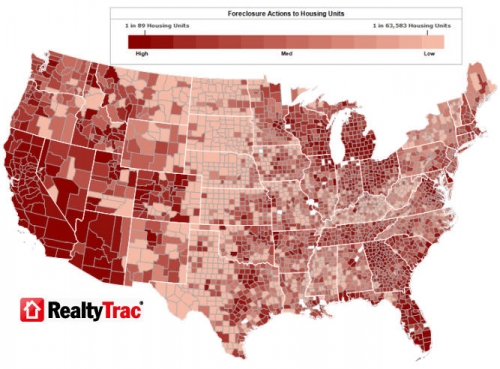
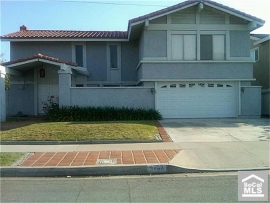


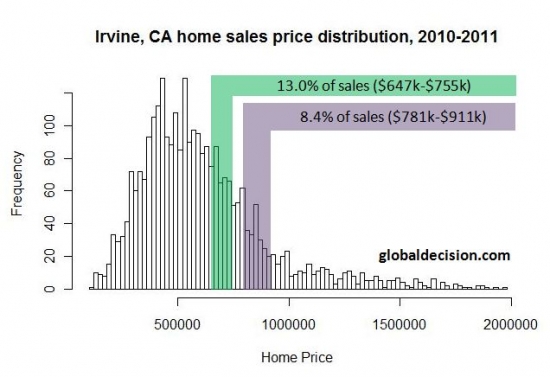

.jpg)








.jpg)




